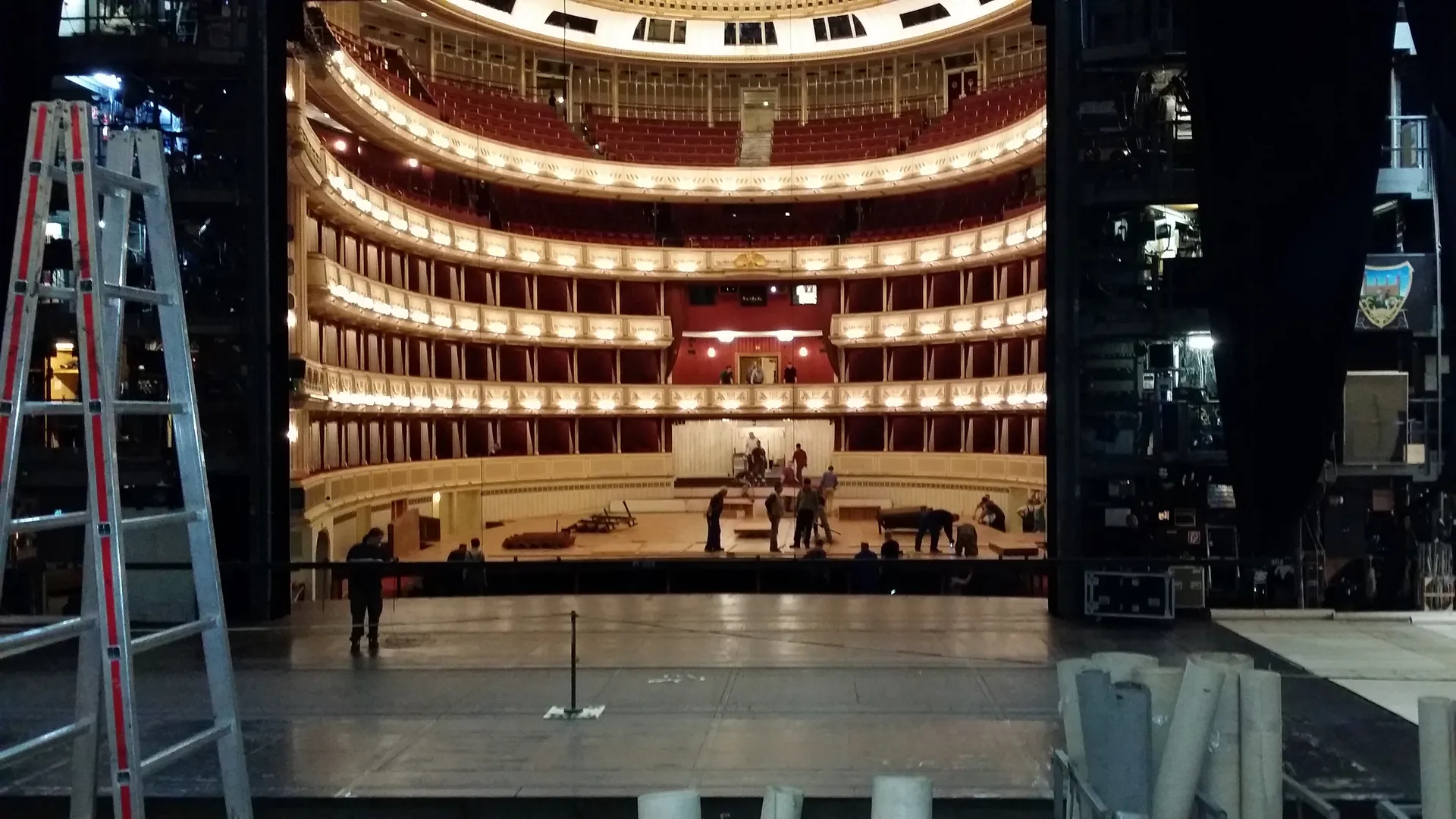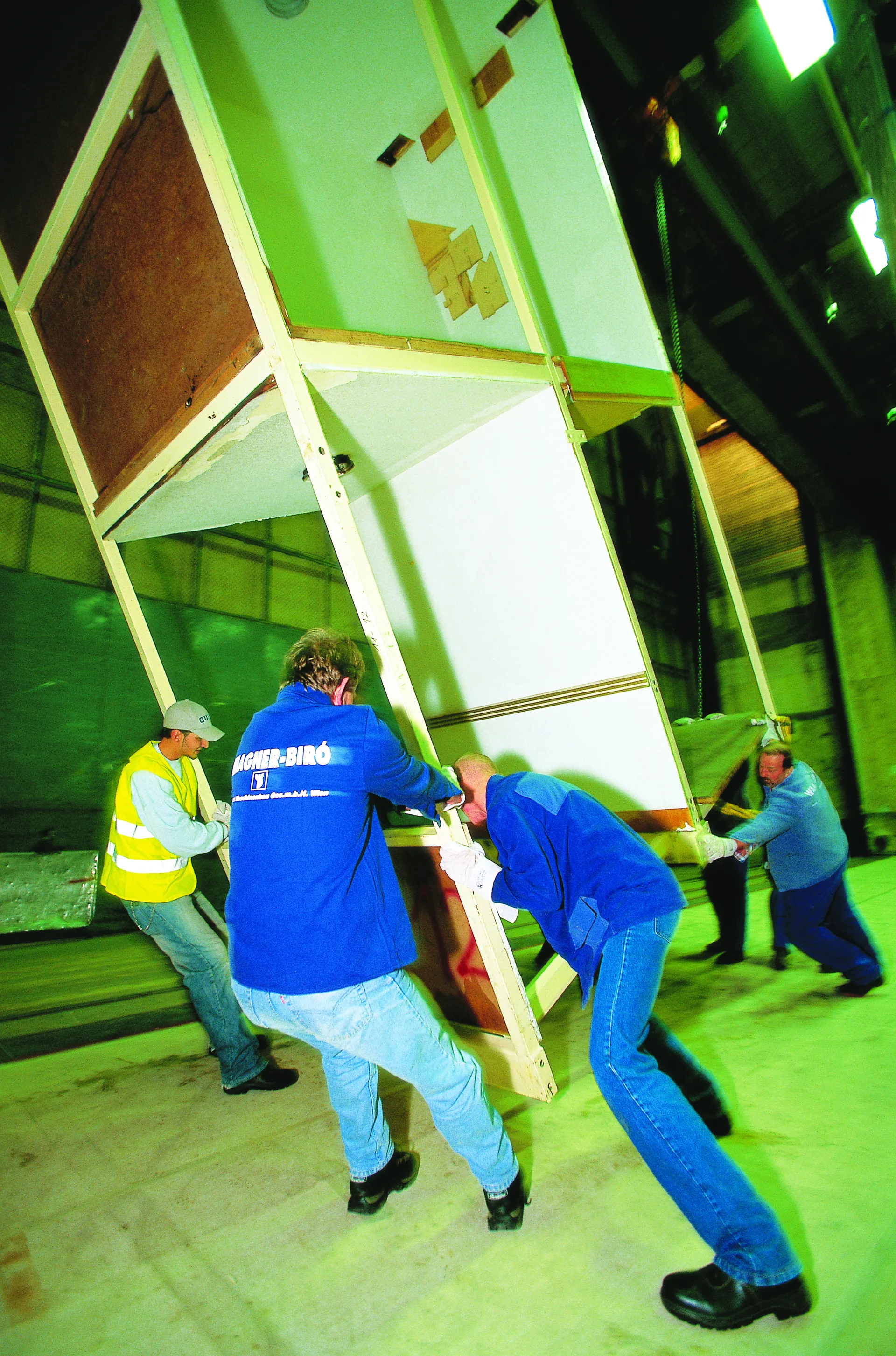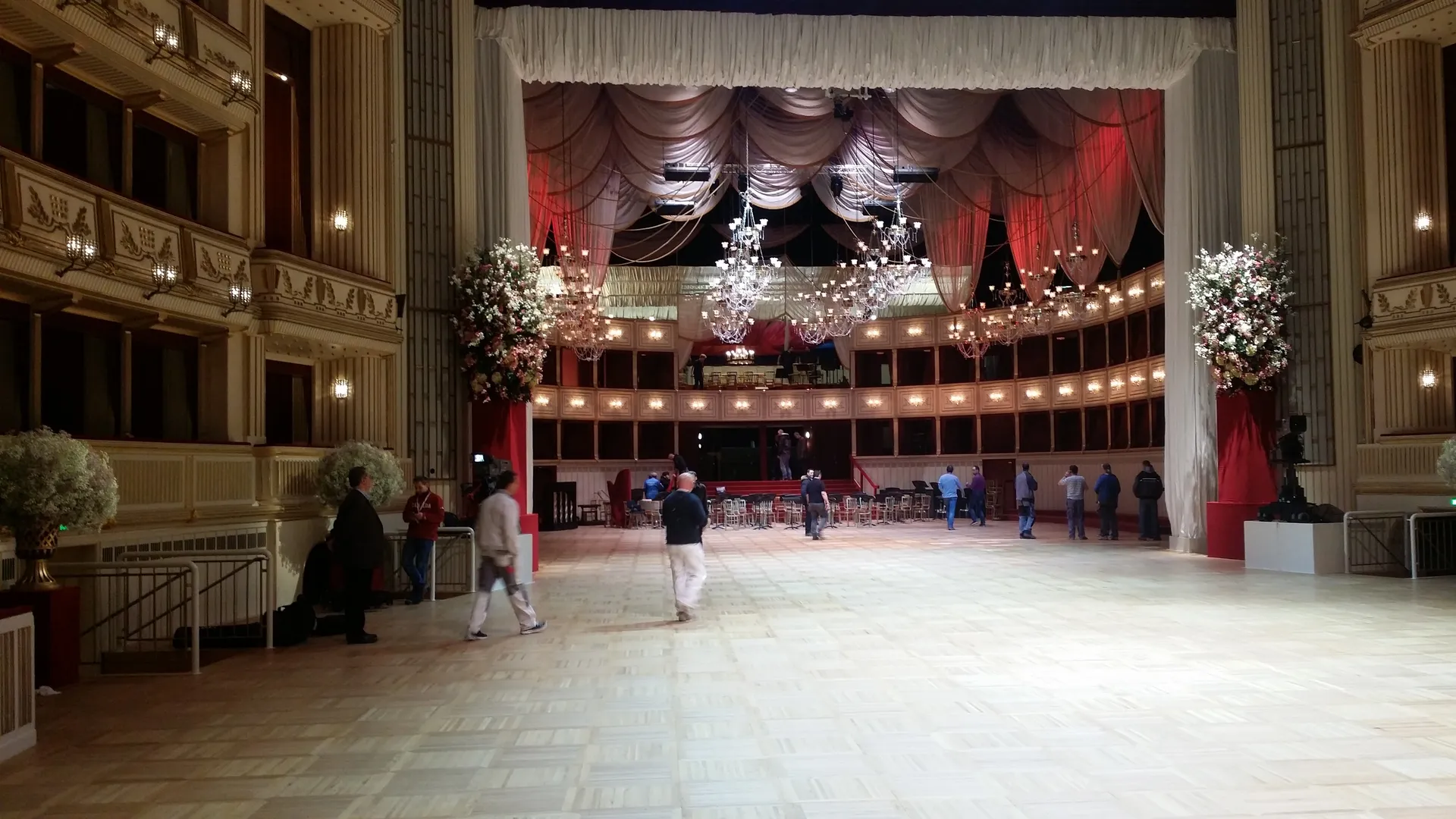article
Transforming the Vienna State Opera into a ballroom

The transformation of the Vienna State Opera into one of the most magnificent ballrooms in the World.
Reading time: 4 min 31 sec
Vienna State Opera: One of the most beautiful balls worldwide takes place annually in the State Opera in Vienna on the last Thursday in Carnival: the Vienna Opera Ball.
The celebration was first held as a soiree at Vienna Opera House back in 1877, during the Habsburg Monarchy. After the fall of the Imperial House, however, these festivals were quickly remembered and in 1935 the first festival, now known as the Opera Ball, took place.
A race against time – The conversion of the Vienna State Opera
Waagner-Biro Stage Systems manages the conversion of the opera house into a ballroom in record time. Preparatory work begins the week before in the external storage in Petronell and in the State Opera itself.
The insertion of the loge elements into the lower stage of the State Opera starts on Monday at 6:00 am – in the week of the Opera Ball – and is only interrupted by the evening performance that is still taking place from 5:00 pm to 10:30 pm.
When converting, 500 seats in the parquet must first be removed and a leveling construction must be installed for the construction of the parquet floor. Then 450 m² of parquet flooring can be laid, reground and sealed in less than 10 hours. The auditorium and stage are thus combined into one room, creating 800 m² of dance floor.
On Tuesday – in the week of the Opera Ball – the assembly of the loges in the ballroom begins. The loge elements (approx. 70 pieces) are inserted and fixed and the committee stairs are installed.

The assembly in the ballroom takes place between 10:00-23:00, about 100 tons have to be transported and installed safely. All this is done in coordination with all the people responsible for the decoration, lighting and catering, to make the perfect evening for the 6,000 guests who attend the ball. Every step needs to be synchronised in time and coordinated, otherwise the conversion becomes unmanageable.

As every year, a version of Mozart’s Magic Flute specially designed for children takes place the day after the Opera Ball. This gives 7,000 school children from all over Austria the unique opportunity to see an opera for free.
Facts & Figures of the conversion of the Vienna State Opera:
- 37 Waagner-Biro Stage Systems employee
- Moved tonnage: approx. 100 tons of transportation to and from the Opera House
- 30 hours conversion of the opera house into the ballroom, dismantling in 21 hours
- 80 low loader transports for the dance floor, stage boxes and cladding elements
- Over 5,000 ball guests
- 144 pairs of debutants
- 150 musicians
- 171 flower arrangements and 480 flower bouquets
- Around 52,600 glasses
- 9,200 pieces of cutlery
- Around 320 people catering staff during the ball
- Around 2.5 million television viewers
- 350 skilled workers and 150 auxiliaries during the renovation phase
- Order volume totaling around € 1.5 million for 50 companies for the construction and renovation work
- 7,000 children in the magic flute for children the day after the opera ball (in the ball decoration)
Our employee Karim Palecek was there for the first time during the conversion for the opera ball and tells about his experiences.
Can you give us a brief overview of the project?
The auditorium and lounges of Vienna Opera are recreated on the stage – this transforms the stage into an auditorium, and the dance floor is in the middle.
What is the scope of delivery of Waagner-Biro Stage Systems?
Transport, assembly, loading and fitting of the seating in the stage boxes, as well as dismantling and storage for the next opera ball.
What general and technical challenges are there with this conversion?
Ttechnical challenges tend to take place during assembly and disassembly. The biggest challenge, however, is the time pressure, because on the day before the opera ball there is still a performance, which is dismantled 24 hours before the ball.
The set-up of the scenes, consisting of 60 stage parts, takes 14 hours. This means extremely low fault tolerance, every move has to be right. The bringing out of the scenes of the last performance and the delivery of the backdrops for the opera ball overlap. As soon as the last visitors have left the ball, the dismantling takes place under time pressure in order to prepare the opera for the next performances.
How many employees of WB work on this conversion with?
Four shifts simultaneously work on the construction of the Opera Ball. One shift is responsible for outsourcing in the warehouse, the other three shifts are carried out directly in the opera. A total of approximately 55 employees helping with the construction of the Opera Ball.
When does planning for this conversion begin?
The planning for the next Opera Ball starts right after dismantling. Immediately afterwards, the current structure of the opera ball is analyzed and any suggestions for improvement are discussed. The actual planning then starts every year in December.
It was the first time for you in 2019 that you were part of this transformation. What are your personal impressions?
An overwhelming feeling when the set-up is successful and all boxes are ready for the opera ball – and you know that the hard work was worth it.
Would you like to visit the Opera Ball yourself?
Yes, definitely – you definitely have to see it.
Behind the scenes of the Vienna Opera Ball
 ©Waagner-Biro Stage Systems
©Waagner-Biro Stage SystemsInes Schwabl
Author
 ©Waagner-Biro Stage Systems
©Waagner-Biro Stage SystemsAngelika Albert-Knaus
Author
6/11/2025
In this article
Waagner Biro Stage